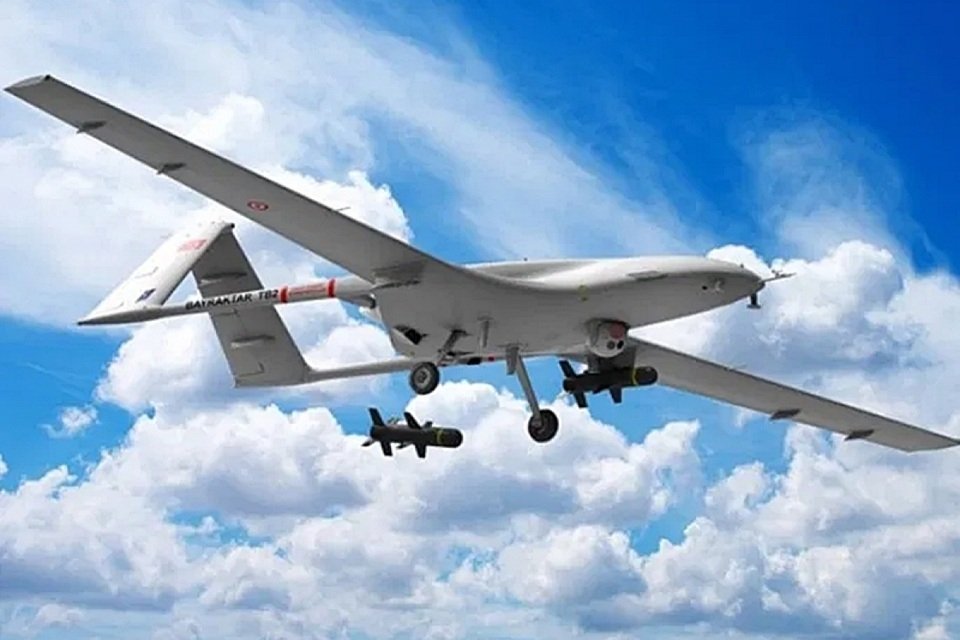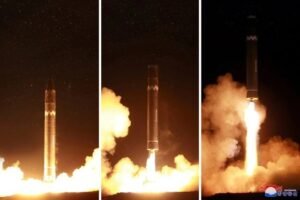
Azerbaijan prevails in the Karabakh conflict thanks to UVA 1
Armenia and Azerbaijan signed a ceasefire agreement effective from November 10 with many provisions beneficial to Azerbaijan.
The war between Azerbaijan and the Armenian side (officially with the self-proclaimed `Republic of Arsakh`, not recognized internationally) has temporarily ended after the two sides signed a ceasefire agreement on November 9, 2020 under the loyalty of Azerbaijan.
UAV Bayraktar TB2 – `god of death` in the air.
A new turning point in modern warfare
Faced with this reality, the Editor-in-Chief of The Print (of India) explained that “unlike most wars in recent decades, this war has ended decisively in the sense of having a winner.
Back in the 1990s, it was the Armenian side that won against Azerbaijan.
Editor-in-Chief Shekhar Gupta of The Print commented: `This is truly the first war in the history of modern warfare in which victory is determined almost entirely by the power of combat by unmanned aircraft.`
The new war between Azerbaijan and Armenians in Nagorno-Karabakh began on September 27, 2020 in the disputed region of Nagorno-Karabakh.
While the Armenian side (specifically the unrecognized self-proclaimed “Republic of Artsakh”) fights with tanks, ground artillery, and air defense systems, the Azerbaijani side relies almost exclusively on drones (
Gupta said: `These are expensive unmanned aircraft, but they are very useful when used to target and shoot at the enemy, especially missile complexes and air defense radar systems because these devices all have powerful radiation.`
How did Azerbaijan win?
Gupta mentioned two articles in the Washington Post and the Oryx blog analyzing the possibility that the recent Nagorno-Karabakh war will change the perspective of modern warfare.
Oryx’s article compiled photos and videos to determine how much equipment each side had lost.
`Just like that, these armored vehicles and tanks are there as targets for the enemy to practice aiming at,` Gupta said.
In addition, according to Gupta, the Azerbaijani side also applied dangerous tactics, in which they deceived the Armenian army with an ancient aircraft (from 1947) modified to pretend to be a UAV.
“Azerbaijan converted a biplane with a single propeller engine into a single-use UAV.
In response to the above aircraft, the Armenian side activated radars and air defense missile systems, revealing their position.
`That’s how almost the entire air defense and missile defense force of Nagorno-Karabakh was taken down,` Gupta said.
Advantages of UAVs
Explaining the advantage provided by a UAV, Gupta pointed out that UAVs can weaken an enemy force through a negative impact on the psychology of enemy soldiers because “they don’t know what’s coming and
“It’s scary, because you don’t know anything – you sit on the ground, you sit in a tank, you don’t know there’s someone hovering over your head, detecting your electronic signals, your heat signals.
Gupta also quoted Armenian Prime Minister Nikol Pashinyan talking about the country’s disadvantage in the field of UAVs.
Gupta elaborated on the statement of the Armenian prime minister: “An army sitting on the ground and an air force using expensive jets with pilots inside will not be able to cope with an enemy.
Gupta quoted researcher Franz-Stefan Gady as saying that “tanks and armored vehicles may not have become obsolete, but Nagorno-Karabakh has demonstrated the growing importance of using UAVs along with other weapons.





